Coral Reef Ecology Curriculum Units
The Khaled bin Sultan Living Oceans Foundation has created an award-winning Coral Reef Ecology Curriculum to engage and inspire students to learn about coral reefs and to become stewards of this vital ecosystem. Designed for middle and high school students and teachers, this educational resource contains educational videos, interactive exercises, lessons, and games designed to teach students about coral reefs, marine science, and ocean conservation.
The Coral Reef Ecology Curriculum covers a wide variety of topics – most of the lesson plans in the curriculum use coral reefs as an example to teach broad themes relating to the natural world and our environment. There are currently 14 custom-designed units available, and we are currently working on adding more.
Units
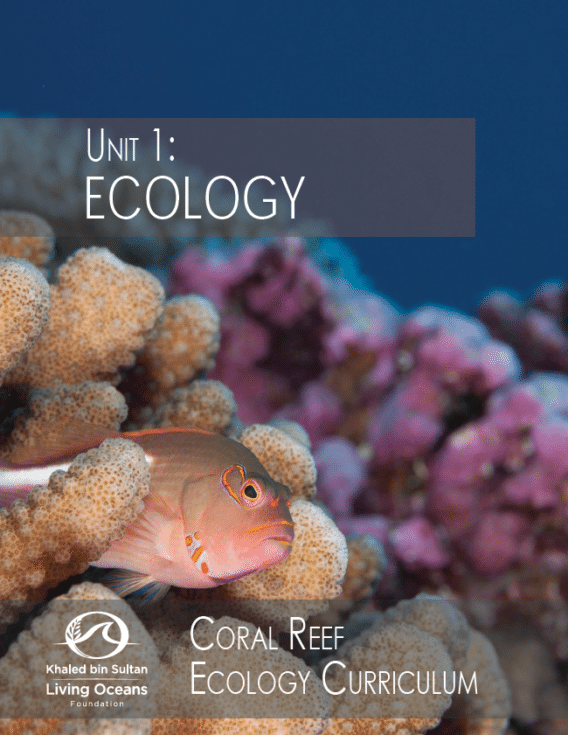 1. Ecology
1. Ecology
This unit explains what ecologists study and how it applies to coral reefs. Learn about the meaning of ecology, the biological hierarchy of life, and ecological levels of organizations. Use the “What is Ecology?” video, complete a worksheet about biotic and abiotic factors, and perform a biological survey of an outdoor area to reinforce these concepts.
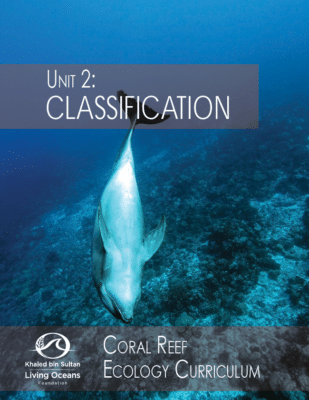 2. Classification
2. Classification
This unit explains how scientists organize the millions of organisms on Earth. Learn about the Linnaean naming system, modern classification, and cladograms. Resources include “How do we Classify Organisms” video, multiple worksheets on classifying organisms, and activities that allow students to construct a dichotomous key, build a cladogram, and design a coral classification system.
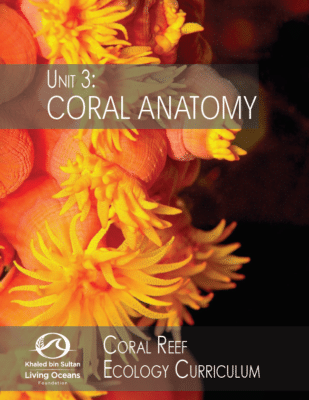 3. Coral Anatomy
3. Coral Anatomy
This unit explains some of the characteristics and structures of corals, and how they function. Use the “Form Fits Function” and “What are Corals?” videos, explore a coral polyp’s anatomy using an online interactive, and design and build a coral polyp using recyclable materials.
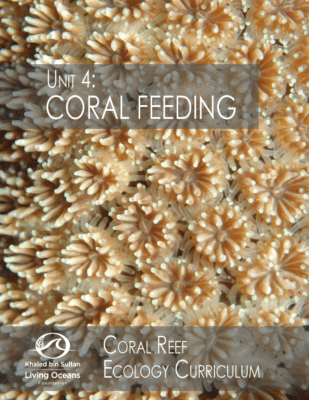 4. Coral Feeding
4. Coral Feeding
This unit explains what corals eat, how they feed, and additional ways that they obtain energy. Learn about topics such as predation, symbiosis, photosynthesis, and cellular respiration. Use the “Coral: What Does it Eat?” video, imitate how corals feed and determine corals’ most successful feeding strategy, play charades to illustrate symbiotic relationships, and design a model to illustrate corals’ symbiotic relationship with zooxanthellae.
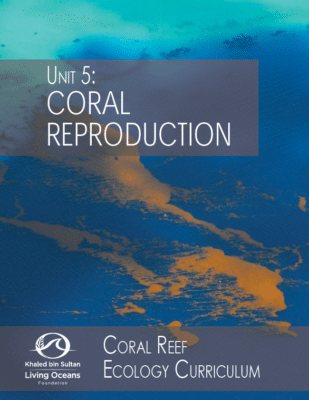 5. Coral Reproduction
5. Coral Reproduction
This unit explains different strategies that corals use to reproduce. Learn about both sexual and asexual reproduction. Use a video about coral reproduction, play a game of tag to learn the advantages of safety in numbers, and draw a comic to learn about the different types of coral reproduction.
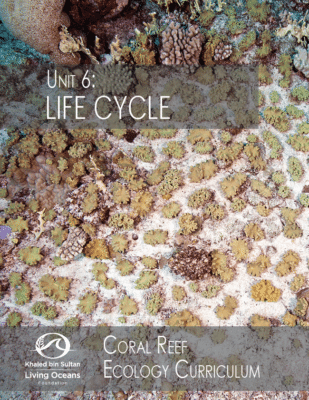 6. Life Cycle
6. Life Cycle
This unit explains the cell cycle and the life cycle of corals. Learn about the life cycle, the cell cycle, mitosis, and meiosis. Use a worksheet to label the structures of a chromosome and a cell undergoing mitosis and construct a story wheel to illustrate the different stages in a coral’s life cycle.
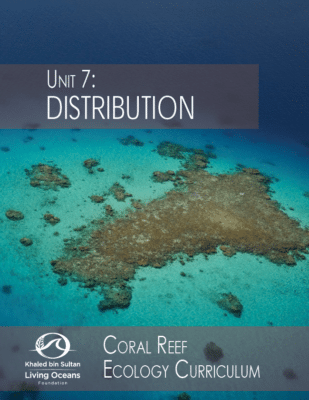 7. Distribution
7. Distribution
This unit explains the two major drivers of coral distribution: salinity and temperature. Learnabout coral distribution, currents, and the factors that drive ocean circulation. Use “Where are Corals Found” video, perform different lab exercises to determine the density of unknown liquids, and conduct an experiment showing how salinity and temperature affect the density of water.
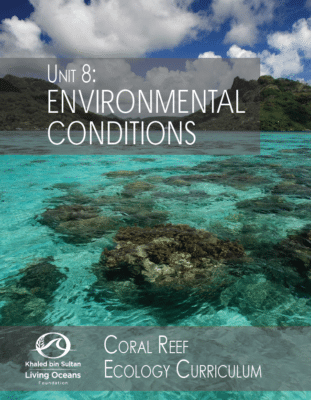 8. Environmental Conditions
8. Environmental Conditions
This unit explains the abiotic factors that corals need to thrive. Learn about the biotic and abiotic factors of a coral reef ecosystem. Conduct a laboratory experiment to evaluate water quality samples from different coral reef locations and compare the difference between shallow and deep-water corals.
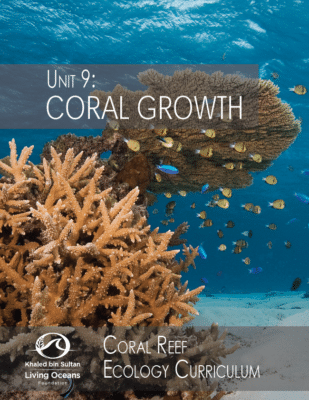 9. Coral Growth
9. Coral Growth
This unit explains how corals grow and the shapes that they form. Learn about coral growth rates and the importance of their growth forms or shapes. Simulate coral skeleton growth in different environmental conditions and eat the resulting candy corals.
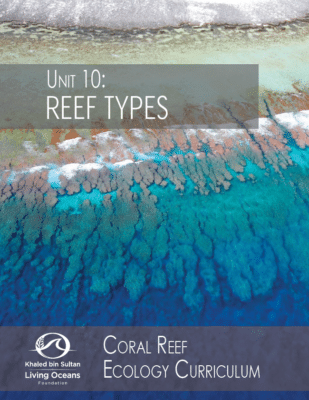 10. Reef Types
10. Reef Types
This unit explains bathymetric features of the ocean floor and how this relates to coral reefs. Learn about Earth’s geomorphology and the various types of coral reefs. Make a bathymetric model and analyze if the ocean features are feasible for corals to grow.
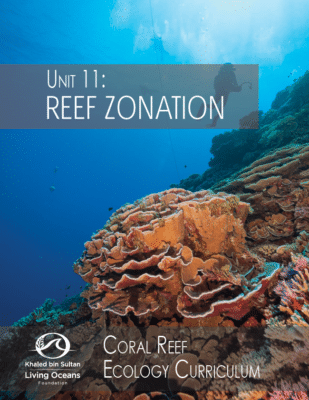 11. Reef Zonation
11. Reef Zonation
This unit explains the characteristics and location of the coral reef zones. Play the “Coral Reef Zones” video, create a clay model to illustrate the different vertical zones of a coral reef, and explore the zones of a coral reef like a scientist, using online GIS mapping tools.
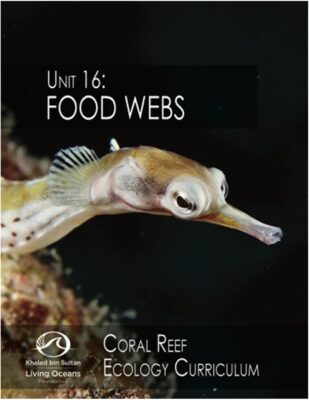 12. Food Web
12. Food Web
This unit explores the complex connections of the coral reef food web, and how energy is transferred and matter is recycled throughout this ecosystem. Use the “Coral Reefs: Unraveling the Food Web” video, model how matter is cycled and energy flows through a coral reef food web, and learn about disruptions that threaten the stability of this ecosystem.
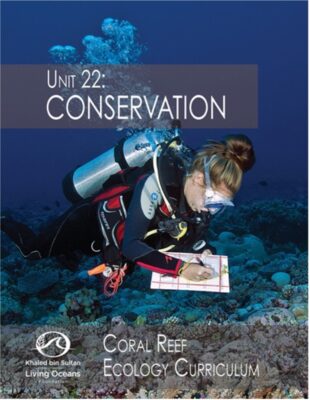 13. Conservation
13. Conservation
This unit describes different actions that people can take to manage and conserve coral reefs. Explore and nominate Hope Spots, write a compelling letter advocating for the creation of an Marine Protected Area (MPA), and create a management plan for a proposed MPA.
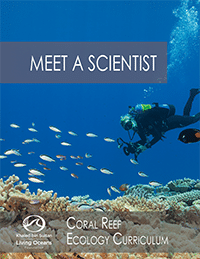 14. Meet a Scientist
14. Meet a Scientist
In this unit, students draw and discuss their vision of what a scientist looks like, investigate the careers of various marine scientists, and are encouraged to picture themselves as a scientist.